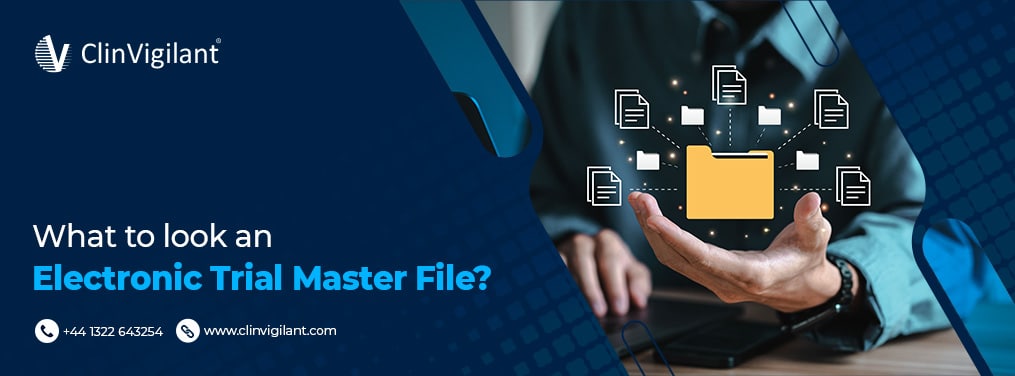
Introduction
Electronic Trial Master File (ETMF) has become a critical component of the overall success of my trials. As such, it’s essential that I understand what to look for when selecting one. In this article, I’ll break down the key factors to consider when evaluating and selecting an ETMF system for my trials.
First and foremost, I need to determine what type of ETMF system best meets the needs of my organization. Should I choose a hosted or on-premise solution? Depending on the size and scope of my studies, one or the other may be more suitable. Additionally, it’s important that I consider how user-friendly and intuitive an ETMF system is. As the person responsible for the day-to-day management of the ETMF, I need to ensure that the system is easy to navigate and offers a comprehensive set of features for my users.
What Are The Features Of Electronic Trial Master File
1 . Regulatory Compliance
The Electronic Trial Master File (eTMF) helps to ensure that clinical trial documents are in compliance with global regulatory standards. It can help streamline the process of managing and tracking submissions to governing bodies, such as the FDA or EMA, for review. This ensures that all required documentation is available and up-to-date.
2 . Secure Document Storage
The eTMF ensures that all documents related to a clinical trial are securely stored in a central repository. Documents can be accessed quickly and easily, and any changes or updates can be monitored in real time. The added layer of security also helps protect against data loss or tampering.
3 . Automated Workflows
The Etmf In Clinical Trials allows for automated workflows, which streamlines the process of managing and tracking documents. This means that each step in the review process is managed efficiently, allowing for quicker review cycles. The system also provides notifications so that users are updated on any changes or updates to documents.
4 . Quality Control
The eTMF allows for quality control measures to be put in place. It also provides tools for version control, so that any changes or updates to documents are tracked and monitored. This helps to ensure the integrity of the trial data and ensures that all required documents are up-to-date.
5 . Increased Efficiency
The eTMF helps to increase efficiency and reduce the time spent managing documents. It allows for faster review cycles, which means that changes or updates can be made quickly and easily. Additionally, it provides an audit trail of all document history, making it easier to identify any discrepancies between original documents and their revisions.
6 . Cost Savings
The eTMF helps to reduce the costs associated with managing and tracking documents for clinical trials. It eliminates the need for manual processes, which can be time-consuming and costly. Additionally, it reduces the possibility of human error, which can lead to delays or even invalidation of trial data. This ultimately leads to cost savings in terms of both time and resources.
The Role of Clivigilant in Revolutionizing Electronic Trial Master Files
Clivigilant is a secure, cloud-based platform that revolutionizes the way clinical trial organizations manage their electronic Trial Master File (eTMF) processes. The eTMF is the official repository for all documents related to the conduct of a clinical trial. It contains essential documents such as protocols, amendments, investigator agreements, informed consents, safety reports, and other important resources. Clivigilant simplifies the management of these documents with its user-friendly interface and streamlined workflow.
Clivigilant’s mission is to make clinical trial management easier, faster, and more efficient. It utilizes innovative technologies such as automated document workflows, customized search capabilities, and smart notifications to ensure that all documents are filed in the eTMF accurately and on time. Additionally, Clivigilant provides complete visibility into each document’s status from start to finish, allowing users to monitor progress quickly and accurately.
Clivigilant’s comprehensive suite of tools also helps clinical trial organizations with their governance and compliance requirements. The platform provides a unified view of all documents in the eTMF, as well as reporting capabilities that enable organizations to track document changes over time and identify any potential gaps in compliance. Additionally, Clivigilant’s automated audit trails help organizations identify any potential issues before they become major problems.
By streamlining the management of documents in the eTMF, Clivigilant helps clinical trial organizations save time and resources, while also ensuring that their trials are conducted according to the highest standards of quality and safety. With these capabilities, Clivigilant is revolutionizing the way clinical trial organizations manage their eTMF processes.
Conclusion
the goal of an Electronic Trial Master File (eTMF) is to ensure that all documents related to a clinical trial are accurate, secure, and readily available for review. When evaluating an eTMF system, there are several key considerations you should take into account. These include a user-friendly interface and navigation; comprehensive audit trails; and secure data storage and access. Additionally, consider the system’s ability to maintain accurate document version control and its compliance with applicable regulatory requirements. With these considerations in mind, you can be sure that your eTMF solution will provide the best possible support for your clinical trials.
Ultimately, an effective eTMF system can provide unmatched efficiency and accuracy in the management of clinical trial documents. By properly evaluating an eTMF solution for your needs, you can ensure that all relevant documents are securely stored and readily available to team members when needed throughout the course of the trial.

